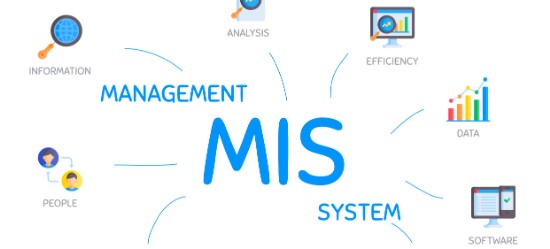MIS Database Management: A Complete Guide
What is MIS Database Management?
MIS stands for Management Information System, and database management is a core part of it. MIS database management refers to the collection, storage, organization, and retrieval of data that businesses use to make informed decisions.
In simple words, MIS helps businesses manage information through structured databases to improve efficiency, productivity, and decision-making.
Why is MIS Database Management Important?
A well-managed MIS database helps in:
- 📈 Improving business planning
- 💬 Enhancing communication across departments
- ✅ Streamlining data storage and retrieval
- 🔐 Securing sensitive business information
- 💡 Making better strategic decisions
It acts like the brain of a business — collecting and organizing all data in one place.
Key Components of MIS Database Management
- Database:
The central location where all business data is stored. - DBMS (Database Management System):
Software like MySQL, Oracle, or MS SQL Server that helps manage the database. - User Interface:
The dashboards or reports that managers use to access the data. - Data Input Tools:
Forms, systems, or applications where data is entered (e.g., sales forms, customer service reports).
Applications of MIS in Business
MIS database management is used in almost every department:
| Department | Usage Example |
|---|---|
| HR | Employee records, attendance, payroll |
| Finance | Budget tracking, expense reports |
| Marketing | Campaign performance, customer feedback |
| Sales | Customer data, sales reports |
| Inventory | Stock levels, supplier information |
Common Database Management Systems Used in MIS
- Microsoft Access – For small businesses or individual users
- MySQL – Free and open-source for web-based apps
- Oracle DB – Enterprise-level, powerful database system
- PostgreSQL – Open-source and suitable for advanced data work
- MS SQL Server – Microsoft’s solution for enterprise-level MIS
Security in MIS Database Management
Security is a top priority in MIS. Important steps include:
- 🔒 Role-based access control (only authorized users can access certain data)
- 🔄 Regular data backups
- 📡 Encrypted data transmission
- 🧪 Auditing and monitoring of database activity
Benefits of MIS Database Management
- Fast access to accurate data
- Improved collaboration between departments
- Real-time business insights
- Better customer service through centralized info
- Cost savings by reducing manual data entry
Challenges in MIS Database Management
- Data duplication and errors
- Lack of proper training for staff
- High setup and maintenance costs for large systems
- Data security risks if not properly managed
Best Practices for Effective MIS Database Management
- Use a reliable and scalable DBMS
- Regularly clean and update data
- Train staff in MIS usage
- Backup data consistently
- Monitor performance and system health
Conclusion
MIS Database Management is an essential tool for modern businesses. By storing, organizing, and securing valuable data, it enables better decisions, efficient operations, and stronger performance.
Whether you’re a small business or a large enterprise, investing in a well-organized MIS system can make all the difference
